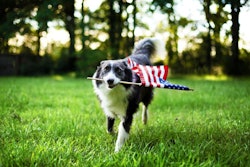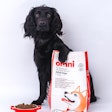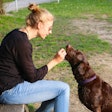
The Association of American Feed Control Officials (AAFCO) held its Annual Meeting "virtually" on August 5–7, 2020. Because of the online format, most of the committee sessions were shorter than typical — the Ingredient Definitions Committee (IDC) session was the exception. The IDC actually held two sessions for a total of 3.5 hours of discussion time. Still, it failed to cover all of the items on its agenda.
IDC items sent to full membership for finalization
A day prior to the first IDC session, a few items previously forwarded from the IDC faced their final hurdle in the Business Meeting. By virtue of an earlier successful GRAS (generally recognized as safe) Notification to the Food and Drug Administration (FDA), the full AAFCO membership voted to approve a new definition for krill meal, but for extremely limited use. It may be included in dry adult dog foods only at levels not to exceed 3%. Any inclusion of krill meal in puppy foods, cat foods, wet foods, etc., still will be objectionable to the FDA and state feed control officials.
Another vote by the full membership expanded the definition for black soldier fly larvae to allow for use in swine feed (along with salmonid and poultry feeds). Although there was nothing in the IDC agenda to suggest that inclusion of this ingredient in pet foods is soon forthcoming, it can be reasonably presumed there is something in the pipeline now that will eventually provide for this use.
Items addressed during the IDC session: procedural and workshops
Much of the IDC session per se was spent on procedural matters, such as actions to accept new tentative definitions, to move some ingredient definitions from tentative to official status and to make editorial and minor non-editorial revisions to the language in other definitions. These actions may have tangential effects on the production of pet foods, but no major impact on the pet food industry as a whole.
As for other items on the agenda, it was reported that there is still little progress with respect to definitions for hemp-derived ingredients. A definition eventually may be coming for hemp biomass (the materials remaining after extraction of CBD). Hemp seed meal is possibly another ingredient to be defined at some juncture.
The IDC is making plans to hold a workshop on the ingredient definition process. Similar to workshops on pet food labeling and other topics over the years, this would be a stand-alone event held in conjunction with a regular AAFCO meeting. Though subject to change, right now it is tentatively scheduled for August 2021 in Omaha, Nebraska, USA. If and when it's held, that will be a benefit to anyone seeking to learn about the procedures to follow to get new ingredients accepted for use in pet foods.
Items addressed during the IDC session: definitions and future topics
With the passage of a new feed term definition for "common food" (see Petfood Industry magazine, September 2020) the confusingly named "Not Defined Workgroup" is planning to compile a list of foods that are not AAFCO-defined but nonetheless are acceptable by consensus for inclusion in pet foods (and/or animal feeds in general). It is AAFCO's intent to eventually incorporate this compilation into the Online Database of Ingredients (ODI), so those pet food manufacturers with access to the online version of the AAFCO Official Publication and Feed BIN should be able to quickly determine if a prospective ingredient is likely to be acceptable to regulators or not. Importantly, the list is not intended to be, nor can it ever be, exhaustive, so just because a given food item is not included in the ODI won't necessarily preclude the argument that it's still "common."
Efforts are being made to revisit and possibly revise some definitions for ingredients in the Animal Products section as they relate to use in pet foods. The concern is that the current definitions do not necessarily reflect the qualities and standards to which a pet food ingredient could/should/would be held; e.g., a meat and bone meal destined for pet food may be very different from one intended for swine or poultry feeds. As a result, the current definitions may give a false impression as to what actually is in pet food. New, pet food-specific definitions will likely be proposed down the road.
A working group charged with development of a method to validate "independent conclusions of GRAS" (i.e., self-determinations that are not subject to an FDA Notification) has reported it's "time to change direction." A reason for this decision was not offered, but the difficulty in assembling panels of experts (apart from those in FDA) who are wholly without potential conflicts of interest is suspected.
There was no time at the August meeting to discuss the status of menadione sodium bisulfite complex (MSBC) in non-poultry feeds or a proposed new way to declare vitamin content on pet food labels. However, discussion of these matters was held in a subsequent IDC teleconference. Next month's column will report on these more recent developments.
Briefly: Top 5 takeaways
- AAFCO voted to approve a new definition for krill meal for extremely limited use: in adult dry dog foods at no more than 3%.
- The IDC is making plans to hold a workshop on the ingredient definition process.
- With the new feed term definition for "common food,” a group is planning to compile a list of foods that are not AAFCO-defined but are acceptable for inclusion in pet foods. AAFCO intends to eventually incorporate this compilation into the Online Database of Ingredients.
- Efforts are being made to revisit/revise some definitions for ingredients in the Animal Products section as they relate to use in pet foods
- Time ran out to cover all topics during the committee’s session, but a teleconference was held after the Annual Meeting and will be covered in next month’s column.
More on pet food regulatory issues



















